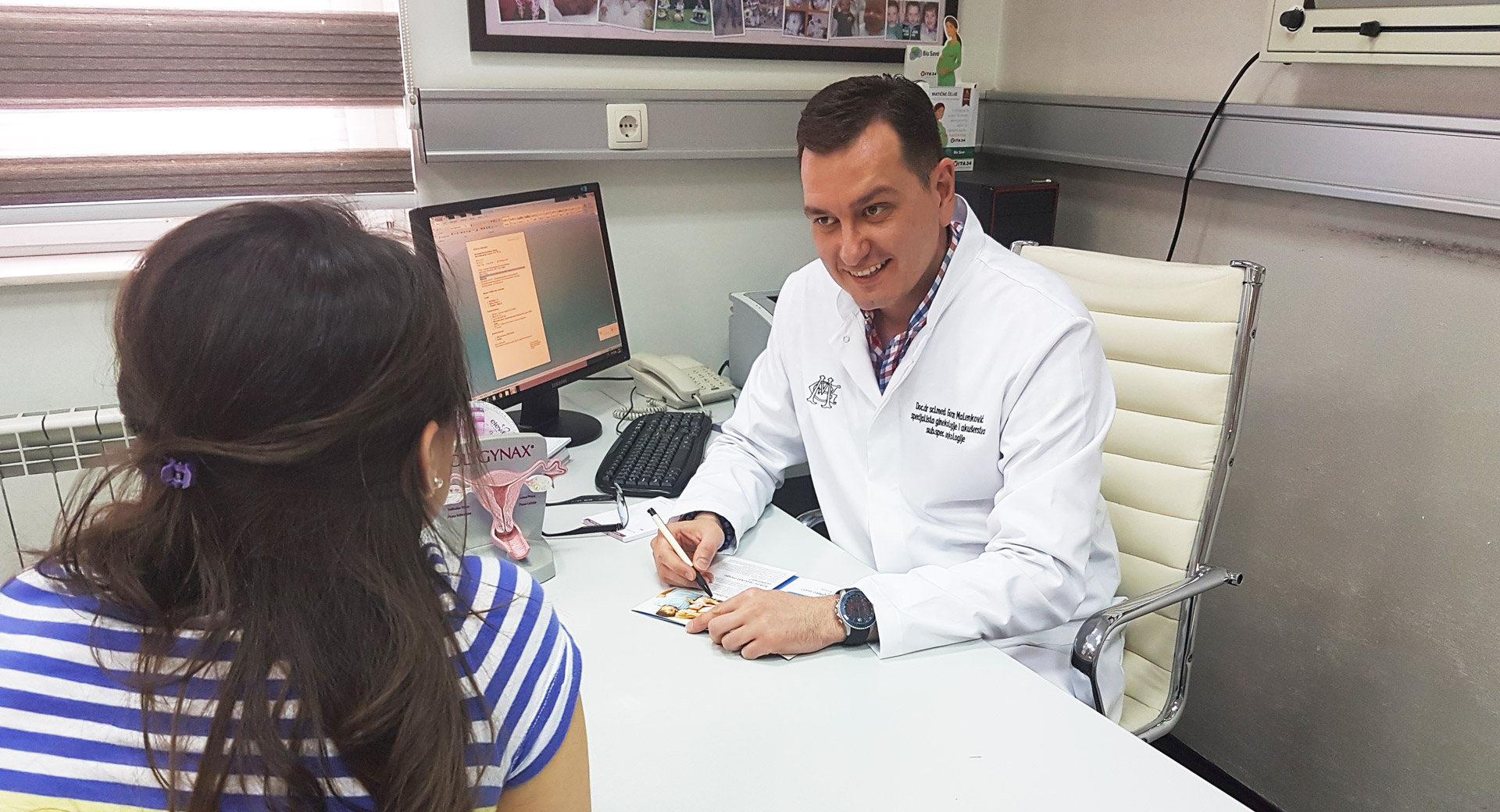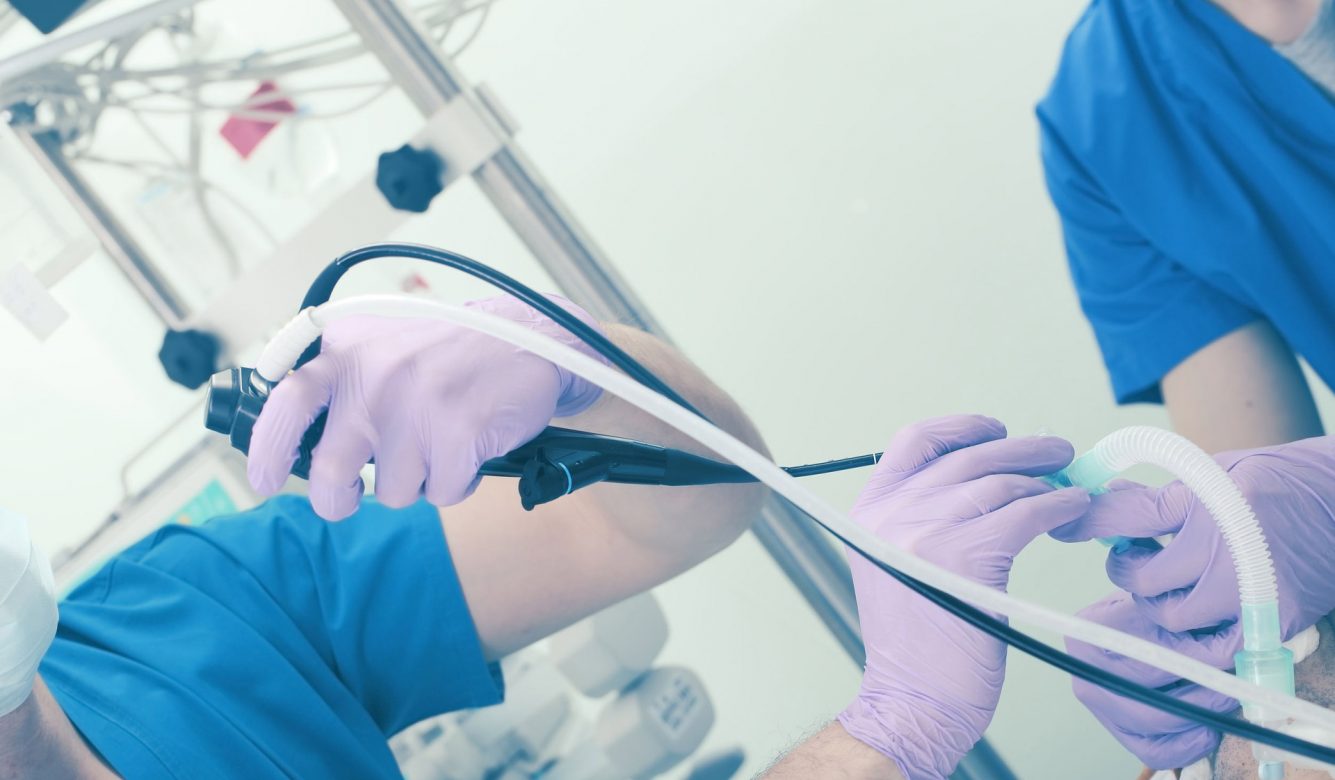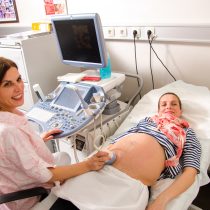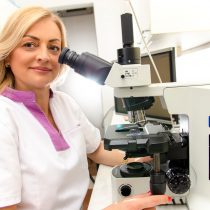Because of the numerous advantages it has, this minimally invasive procedure represents the “gold standard” in operative gynaecology. The abdominal cavity is entered without cutting it in a traditional way, through 3 to 4 small holes of diameter of 0.5 to 1 cm, and without cutting the anterior abdominal wall. In this way most of the operations in gynaecology can be carried out, and success is the same as those carried out in the traditional manner – laparotomy.
– The reason why laparoscopy should be chosen is that it has many benefits in comparison to traditional operational approach. It is less painful, recovery is easier and faster, and there is less trauma to tissues and organs, fewer postoperative adhesions, smaller scar on the skin – a better aesthetic effect. You get out of bed sooner, use fewer drugs, return to daily activities sooner, and you can leave hospital the day after the surgery, Assistant Professor Goran Malenković, PhD in Medicine, a specialist in gynaecology and obstetrics and an oncology subspecialists and an associate of hospital Genesis, says.
– The procedure is carried out under general anaesthesia – rigid tubes, trocars, are introduced through openings in the skin, through which a telescope with a small camera and special laparoscopic surgical instruments are introduced into the abdominal cavity, and the overall state inside the abdominal cavity is displayed on a transparent screen, which enables gynaecologist – operator to examine organs within the abdomen and pelvis: uterus, ovaries and fallopian tubes, abnormalities of the uterus, the appearance and patency of fallopian tubes and the presence of ovarian cysts or inflammatory diseases, Malenković explains.
Laparoscopic procedures are documented in an electronic form in the form of pictures and videos in specialised gynaecological hospital “Genesis”, and the following procedures may be carried out in this way:
- ovarian cysts (cystectomy)
- sampling (FNA, biopsy)
- uterine fibroids, both those on its outer side and in its wall (myomectomy)
- painful syndromes (vaporization)
- adhesions (adhesiolysis)
- examination of the fallopian tubes patency and removal of adhesions in them as a part of infertility treatment (chromopertubation and salpingo-ovariolysis)
- surgical removal of the fallopian tubes (salpingectomy) in case of ectopic pregnancy and other conditions in which a certain process damaged the fallopian tubes to such an extent that their preservation brings more harm than good
- the uterus can be removed for various reasons – benign and malignant (hysterectomy)
- polycystic ovarian syndrome (ovarian drilling)
- various forms and stages of endometriosis
- diagnostic laparoscopy – an important method of examination of reproductive organs of women, and as such it is often used as part of infertility treatment. This procedure assesses the state of the fallopian tubes, discloses a variety of abnormalities of the genitals, detects the cause of various painful conditions in the pelvic cavity, diagnoses ectopic pregnancy, endometriosis and other diseases and conditions in the pelvis
- sterilization – one of the techniques of permanent contraception

The decision on the type of surgery depends on the gynaecologist – the operator, his/her ability to perform a certain type of surgery by using a laparoscopic procedure and agreement with the patient. Preoperative analysis necessary to prepare for the laparoscopic procedure are:
- complete blood count with biochemical analysis and indicators of coagulation
- blood type, Rh factor
- urine
- gynaecological examination and Pap test
- HIV, HBS, HCV
- Examination by an internist
- In case of a chronic disease, and after talking with the anaesthesiologist in specialized gynaecological hospital “Genesis”, it is necessary to obtain the opinion of a competent medical specialist about the suitability of the surgical treatment.
According to Dr Malenković, the duration of the procedure varies from a few minutes to several hours depending on what is being done. Upon completion of the operation, the patients get their rooms with all-day medical care. The patient can get up from bed a few hours after she started drinking and eating light food and is released from specialised gynaecological hospital “Genesis” in 1 – 2 days.
– The patient should do activities depending on how she feels. A control check-up will be appointed in seven days. Patients usually return to their daily activities in 7 days, as opposed to conventional operation, in which case this period is up to 5 weeks, Malenković emphasised and added that after laparoscopy patients may feel pain in the shoulders and the rib cage due to the residual small amount of gas that is used for laparoscopy in the abdominal cavity, muscle pain, pain in the wound, nausea, and sometimes they may experience pain similar to menstrual accompanied by vaginal discharge for several days.
Despite the attention paid to every single patient, complications are possible during laparoscopic procedures. In most cases, a possible complication can be immediately noticed, and promptly remedied.
For any further information on laparoscopy and time when you can make an appointment with your doctor, call phone numbers of the hospital: +381 21549444, +381 21549777, +381 60549444 1.






